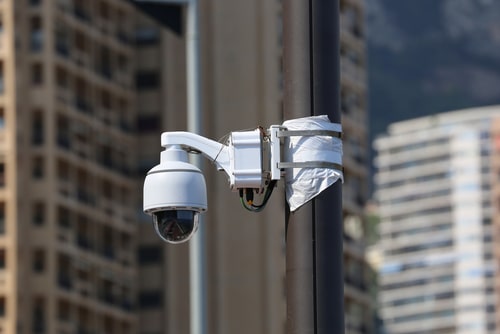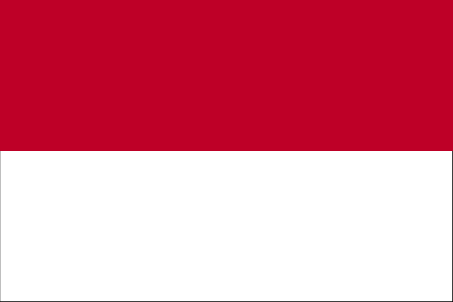Last updated on October 19th, 2022
21. Monaco was never a part of France despite its long history and geographical intimacy with France.
22. If you were a resident of Monaco, but not born there, you would be called Monacoian. And those that are born and bred in the principality are referred to as the Monégasque.
23. The second child of the Prince of Monaco and an American model (married in 1956) is the present ruler of the principality.
24. To the eastern side of the country lies Italy at a distance of 8 kilometers.
Monaco on the map
25. The economy of this tiny nation is supported by the revenue generated from radio, television, and the casino and state monopolies on stamps and tobacco. Banking and financial activities also support the nation’s economy.

26. There are a large number of security cameras throughout the principality to discourage criminal activity.
27. With some land reclamation from the Mediterranean Sea, the size of the principality has grown by at least 20%.
28. Education is compulsory for kids between the ages of 6 and 16.
29. The death rate is more than the birth rate in the principality (2022 est.)
30. In 1993, Monaco became a member of the United Nations.
31. The country sees more than 1.5 million visitors each year.
32. Remember: Monaco is a city state. It does not have a separate capital. This is mainly due to its small size.
33. Brewery, chocolate factory and flour mill are the first industries that developed in Monaco at the beginning of the twentieth century.
34. Note that Monaco’s flag is similar to that of Indonesia with the only difference in the size of the flag. Indonesian flag is a bit wider than that of the Monaco’s.
35. Did you know that Monaco almost has a zero unemployment rate? The country is also void of any poor people.
36. Monaco has the highest life expectancy (89.5 years) in the world. The country with lowest life expectancy is Chad (50.2 years).
37. Natives of Monaco are called Monegasque. It is interesting fact to note that despite its small size, the country is home to a majority of foreign population. The natives of the land are in minority here. The largest population in Monaco is of the French, followed by Italian and Britishers.
38. AS Monaco FC, Monaco national football team, Monaco national rugby union team – are the sports team from the world’s second smallest country.
About The Flag Of Monaco

1. Design and Symbolism
The flag of Monaco represents a small but proud city-state. It is a horizontal bicolor with red and white bands. Both are heraldic colors of the House of Grimaldi – rulers of the principality since 1297.
The Grimaldi coat of arms has alternating red and white diamonds on the shield, supported by monks with raised swords. Above is a crowned royal cape. Below is a ribbon with the Latin motto “Deo Juvante” (With God’s Help).
2. Adoption
Monaco adopted the bicolor flag on April 4, 1881, during the reign of Charles III.
3. Technical Details
The official flag dimensions follow a ratio of 4:5. However, many manufacturers ignore the formal decree and make flags using a proportion of 2:3.
4. History
Monaco is a sovereign city-state on the French Riviera. Its name comes from the Greek word “monoikos” (single house), which refers to the sole temple of Hercules in the area.
Its small size made it vulnerable to the influence of powerful regional forces, resulting in multiple historical flags. It was part of the old Kingdom of France, which used a plain blue field as its banner. In 1034, it was under the Holy Roman Empire, which raised a yellow flag with a black eagle.
In 1191, the emperor Henry VI gave the city of Genoa rights over Monaco. They began the construction of a fortress on high ground and created a settlement around it. In 1297, Francesco Grimaldi and his men seized the castle disguised as monks. Genoan forces took it back, but his descendants became rich enough to buy it and rule Monaco for centuries.
In the mid-1300s, Genoa allowed England to raise the flag of St. George on their ports (a red cross on a white field). The English benefitted from brisk sea trade, while the Genoans collected a sizable fee. Next was the flag of the Crown of Aragon, with nine yellow and red stripes. In 1419, Monaco finally raised its flag: a white field of red diamonds.
In the following centuries, Milan, France, Spain, and Sardinia would have their flags in the city. The Franco-Monegasque Treaty of 1861 resulted in French recognition of Monaco’s sovereignty. In 1881, Monaco raised its chosen flag: two horizontal bands of red and white. It fell briefly under Italy and Nazi Germany during World War II. In 1945, Monaco regained independence and reinstated the bicolor flag.
5. Flag Facts
The Princely and Government Flag
The constitution of Monaco established a princely flag alongside the national flag. It features the arms of the House of Grimaldi on a white field. This variant flag is in government offices and the royal palace.
The Royal Personal Standard
Each prince of Monaco has a personal standard. Prince Rainier III used a crowned monogram on a white field. His son, Prince Albert II, followed the pattern and substituted “A” for the letter “R.”
Similarities with Other Flags
The flag of Monaco and Indonesia appear identical with their horizontal red and white bands. However, Monaco has a darker shade of red.
The flag of Singapore is also similar except for a crescent and five stars – enough to make a clear distinction. Meanwhile, the flag of Poland looks like an upside-down version of the Monaco flag.
Monaco – country at a glance
| Independence | 1861 |
|---|---|
| Capital City | Monaco (city-state) (43°43′N 7°25′E) |
| Largest City | Monte Carlo |
| Land Area | total: 2 sq km land: 2 sq km water: 0 sq km |
| Population | 38,473 (January 2025 est.) |
| Official Language | French |
| Languages spoken | Monegasque, Occitan, English and Italian. |
| National Anthem | "A Marcia de Muneghu" (The March of Monaco) |
| Religion | Roman Catholicism |
| Borders | France (land border) |
| Currency | Euro (€) (EUR) |
| Life expectancy | 89.8 years (2024 est.) Life expectancy at birth indicates the number of years a newborn infant would live if prevailing patterns of mortality at the time of its birth were to stay the same throughout its life. Source - CIA |
| Climate | Mediterranean with mild, wet winters and hot, dry summers |
| Terrain | hilly, rugged, rocky |
| Lowest point | Mediterranean Sea 0 m |
| Highest point | Chemin des R?voires on Mont Agel 162 m |
| Suffrage | 18 years of age; universal |
| Birth rate | 6.5 births/1,000 population (2024 est.) |
| Death rate | 11.1 deaths/1,000 population (2024 est.) |
| Sex ratio | 0.93 male(s)/female (2024 est.) |
| Government type | Unitary parliamentary semi-constitutional monarchy |
| Monarch | Prince Albert II |
| Minister of State | Didier Guillaume |
| National holiday | National Day (Saint Rainier's Day), 19 November (1857) |
| National symbols | red and white lozenges (diamond shapes) |
| National colors | red, white |
| Industries | banking, insurance, tourism, construction, small-scale industrial and consumer products |
| Exports | $964.6 million (2017 est.) jewelry, perfumes, watches, packaged medicines, cars (2021) |
| Imports | $1.371 billion (2017 est.) jewelry, cars and vehicle parts, recreational boats, plastic products, artwork (2021) |
| GDP - per capita (PPP) | $115,700 (2015 est.) |
| Time Zone | CET (UTC+1) Summer (DST) - CEST (UTC+2) |
| Internet country code | .mc |
| Calling Code | +377 |
| Drives on the | Right |
| Table last updated | January 16, 2025 |
